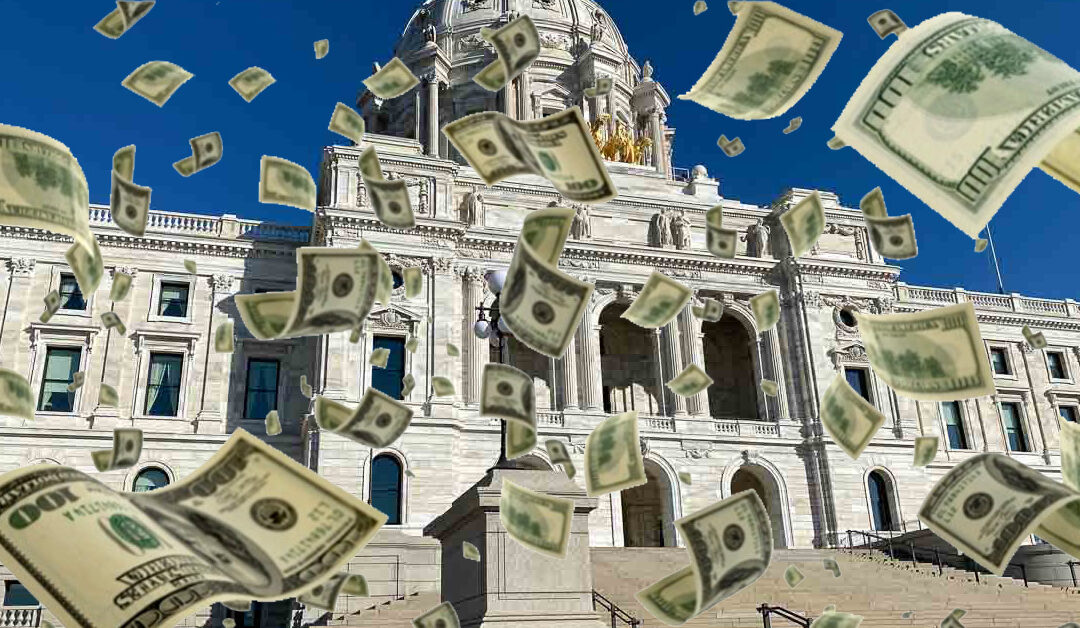The DFL deficit
In February 2023, Minnesota Management & Budget (MMB) forecast a state government budget surplus of $17 billion for the 2024-2025 biennium. In the subsequent “historic” session, the DFL trifecta blew through that surplus and, between 2019 and 2024, Minnesota’s state government spending per person and adjusted for inflation increased by 23%.
That “historic” trifecta also hiked taxes and fees by $10 billion, but even this wasn’t enough to cover the explosion in state government spending, and, in November 2024, MMB forecast a state government budget deficit of $3.5 billion in the 2028-2029 biennium, or $5.1 billion if you account for inflation.
Last month, we learned that Minnesota’s fiscal situation had deteriorated even further. The forecast budget surplus for the 2026-2027 biennium is down $160 million — from $616 million in November to $456 million — and the forecast deficit for the 2028-2029 biennium is up to $4.0 billion, or $6.0 billion if you account for inflation.
But, in the sense that spending exceeds revenues, Minnesota is already running a budget deficit and is forecast to do so until at least 2029.
Figure 1 uses Minnesota Management & Budget budget documents to show state government spending (“Total Spending”) and revenues (“Subtotal Current Resources”) from 2018 onwards. The budget was basically balanced from 2018 to 2020. After that, we see the explosion of revenues – these are nominal numbers – resulting from the Federal government’s COVID-19 spending. The state government’s budget was in comfortable balance from 2021 through 2023 as a result, but, then, after increasing by 10.4% from 2022 to 2023, Minnesota’s state government spending surged again from 2023 to 2024 by a staggering 29.5% and the state government spent $4.7 billion more than it collected. That deficit is forecast to be $4.5 billion this year and will still be $2.1 billion in 2029. The budget is not currently forecast to balance again before 2030.
Figure 1: Minnesota state government spending and revenues, billions

Source: Minnesota Management & Budget and Center of the American Experiment
As my colleague Martha Njolomole has explained, Minnesota’s budget deficit is structural. This deficit — the result of gross fiscal mismanagement by the state government over the last two years — is the central fact of state government finance. How we deal with it — with higher taxes, spending cuts, or some combination of the two — will dominate political and policy discussion in Minnesota for the next two years.

